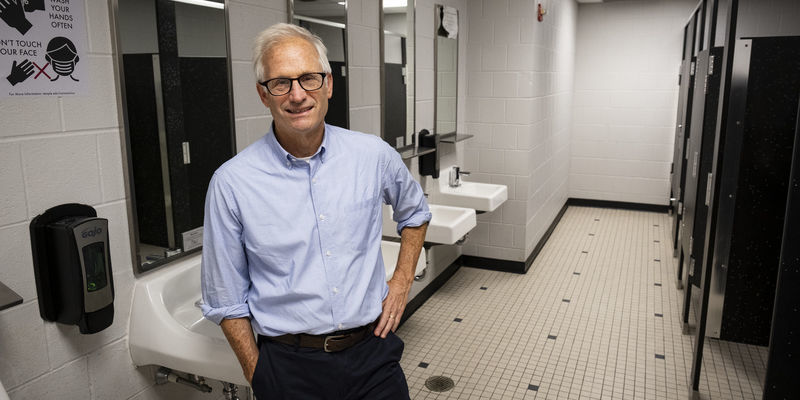Uncovering the complex history of campaign finance
A new book from Temple University faculty member Robin Kolodny offers a detailed look at the U.S. campaign finance system and where it presently stands.

On July 21, United States President Joe Biden announced he would be withdrawing from the 2024 presidential race, but not before endorsing Vice President Kamala Harris for the role. In the 24 hours that followed, Harris’ campaign raised more than $81 million, which according to the campaign was the largest single-day total raised in U.S. history.
Welcome to the unconventional and unpredictable world of campaign finance.
It’s a world that Robin Kolodny, professor of political science at Temple University’s College of Liberal Arts, knows well. Her new book, The Fundamentals of Campaign Finance in the U.S.: Why We Have the System We Have, offers a detailed look at the U.S. campaign finance system as it presently stands. The book is more than a historic retelling of campaign finance. Rather, it considers the campaign finance system in the context of the broader U.S. political and economic system while outlining the various factors that have led the system to become what it currently is.
“Within the book, we’re telling a continual story of campaign finance policy change and reactions to it. This book is not a call for reform, because both of us are pretty much resigned to the fact that we have some fundamental drivers in our political system who want us to continue with the policies we have in place,” Kolodny said. “The cover of the book is a Jenga tower that’s nearly falling over, and the point, of course, is that while we have a bare regulatory system now, what happens when one or two planks move? The whole thing could come tumbling down, and you might not have any regulation at all.”
Recently released by the University of Michigan Press, the new book was co-authored by Diana Dwyre, a professor of political science at California State University Chico. It is presently available for purchase on the University of Michigan Press’ website as well as Amazon. However, through Amazon, it can also be downloaded instantly for free to a Kindle device, and the book is also available for free online via open access.
Written for people with little or no familiarity with federal campaign finance, Kolodny and Dwyre explain why we have a privately funded system, what candidates need to run campaigns and why donors choose to give their money to politics. Along the way, they explain how we now have so many different types of organizations raising and spending money, and how the changing judicial philosophy about what is important in elections led to the weakening of two landmark campaign finance laws.
“It took candidates, parties, interest groups and the courts about 30 years to do serious damage to the spirit of the 1971 and 1974 FECA laws before legislators tried to remedy some of it through BCRA [Bipartisan Campaign Reform Act]. It took only 12 years, from BCRA’s passage in 2002 to the McCutcheon decision in 2014, to essentially gut it,” Kolodny and Dwyre write in chapter four.
Within the book, Kolodny also works to correct several misconceptions regarding campaign finance.
For instance, most folks often assume those with the most campaign spending or campaign donations have the most influence over political leaders. In actuality, different economic factors carry the most influence.
“Take the city of Philadelphia, for example,” Kolodny said. “If the president of Comcast asks for a meeting with Mayor Cherelle Parker, the mayor is not going to take that meeting dependent on whether the Comcast has previously made campaign contributions. The mayor is going to take that meeting because Comcast is the largest private employer in Philadelphia. The structural power of businesses, especially in cities like Philadelphia, has way more outside influence than a person or entity who makes a campaign donation.”
Similarly, Kolodny cautioned that a particular individual’s donation track record might not necessarily indicate where their political leanings lie.
“I always like to use the example of (Philadelphia Eagles owner) Jeffrey Lurie. If you looked at his campaign donations, you would assume that he is an enormous Democrat. Similarly, if you looked at the donations of (Houston Texans owner) Cal McNair, you would assume he is a huge Republican,” Kolodny said. “The reality is that most of their donations are within a 150-mile radius of where their stadium resides, and they are just supporting the legislators that have jurisdiction of that 150-mile radius. Their donations are supporting the status quo, because they do not want things to change, because why would they? Change might not be good for business.”
Over the next several months and through the presidential election in early November, campaign finance is sure to be widely discussed in the news, which makes Kolodny’s new book and its findings even more relevant.
For instance, since Harris was named the presumptive presidential candidate for the Democratic Party, former President Donald Trump has filed an FEC complaint alleging that if Harris receives the campaign funds that were previously made to Biden, it is a violation of federal law. Kolodny doesn’t expect the complaint to go very far.
“The reality is that Kamala’s name was on the ticket from the very start. This was the Biden-Harris ticket,” Kolodny said. “Plus, these types of changes get approved all the time. Even if there were to be legs to this, it would not get sorted out until months after the election is already over.”


